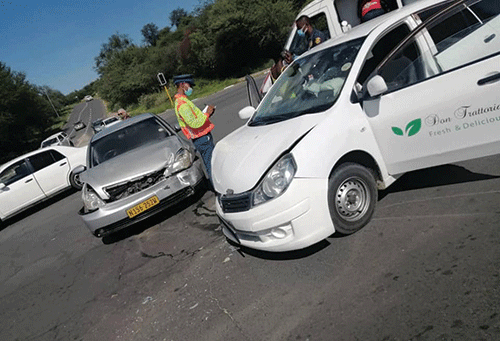Community Policing Officer
Generally, red-coloured lights or items have the longest wavelength among all the colours in the visible spectrum. Hence, this light frequency suffers the least scattering.
In the context of road safety, a red traffic light or traffic signal can travel a long distance, and can easily be spotted by a driver.
Being one of the standard traffic light colours used worldwide, a red traffic signal has specific meanings and implications for drivers.
It is therefore important to highlight the important role it plays in the spectrum of road safety amongst other traffic signals.
The primary purpose of a red traffic signal is an indication for drivers to stop their vehicles.
When the light turns red, all vehicles approaching the intersection must come to a complete stop, behind the stop line if marked, or before the stop sign board if there is no stop line.
Secondly, red signals help prevent crashes by creating a clear indication of when vehicles from different directions should stop, allowing for safer traffic movements.
While managing the flow of traffic, a red traffic signal often coincides with pedestrian crossing signals, allowing pedestrians to safely cross the street without conflicting with vehicles.
Notwithstanding the fact that a red traffic signal serves as a critical tool in the broader system of traffic control by helping to organise and manage complex interactions between vehicles, pedestrians and cyclists at intersections, it remains one of the most violated traffic regulations in the city.
There seem to be many reasons or “excuses” why drivers skip red traffic signals. However, that does not justify the decision to act irresponsibly.
For instance, drivers may reason they skipped a red light because they are running late and cannot afford the delay.
They thought they could make it through the amber (yellow) light, and misjudged the timing.
Other reasons include factors such as the driver was not paying attention; no one was coming, or they really just did not care.
Certainly, drivers opt to disregard traffic regulations by engaging in the extremely risky behaviour of running red lights, which has the potential to result in catastrophic accidents.
Statistics from our database indicate that from January to March 2024, a total number of 118 fines were issued to drivers who disregarded red traffic signals.
This underscores the necessity for drivers to alter their conduct and acknowledge the hazards associated with running red traffic signals.
Running a red traffic signal not only results in a moving violation with a fine of N$2500, as stated in the Road Traffic and Transport Act, Act 22 of 1999, but it also carries the risk of a driver being arrested and prosecuted in the event of a serious accident, especially one causing injuries or fatalities.
The act of speeding through a red traffic signal increases the risk of accidents, and continues to claim lives.
It is therefore essential for drivers to remember their duty of care to fellow road users ,and prioritise safe driving practices.
In a nutshell, it is important to highlight that the Windhoek City Police Service views the issuing of fines as a last resort in enforcing road safety.
Our ultimate goal is for all road users to understand the crucial role they play in adhering to road rules and regulations.
We continue to advocate for voluntary compliance from motorists, and urge them to do their part in promoting road safety.
For additional clarification on this or any other police-related information, please do not hesitate to contact Windhoek City Police Service at 061302302, or SMS on 4444.


